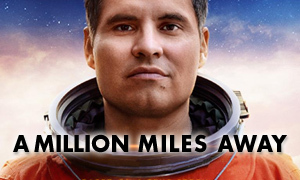The Current War: History vs. Hollywood
| REEL FACE: | REAL FACE: |
Benedict Cumberbatch
Born: July 19, 1976 Birthplace: Hammersmith, London, England, UK | Thomas Edison
Born: February 11, 1847 Birthplace: Milan, Ohio, USA Death: October 18, 1931, West Orange, New Jersey, USA (diabetes complications) |
Michael Shannon
Born: August 7, 1974 Birthplace: Lexington, Kentucky, USA | George Westinghouse
Born: October 6, 1846 Birthplace: Central Bridge, New York, USA Death: March 12, 1914, New York City, USA (cardiovascular disease) |
Nicholas Hoult
Born: December 7, 1989 Birthplace: Wokingham, Berkshire, England, UK | Nikola Tesla
Born: July 10, 1856 Birthplace: Smiljan, Austrian Empire Death: January 7, 1943, New York City, USA (coronary thrombosis) |
Tom Holland
Born: June 1, 1996 Birthplace: Kingston upon Thames, England, UK | Samuel Insull
Born: November 11, 1859 Birthplace: London, England, UK Death: July 16, 1938, Paris, France (heart attack) |
Tuppence Middleton
Born: February 21, 1987 Birthplace: Bristol, England, UK | Mary Edison
Born: September 6, 1855 Birthplace: Newark, New Jersey, USA Death: August 9, 1884 (unknown causes) |
Katherine Waterston
Born: March 3, 1980 Birthplace: Westminster, London, England, UK | Marguerite Westinghouse
Born: 1842 Birthplace: Roxbury, New York, USA Death: June 23, 1914, Lenox, Massachusetts, USA (stroke) |
Exactly how many patents did Thomas Edison hold?
The Current War true story reveals that Edison held 1,093 patents. He is credited as the inventor of revolutionary items like the phonograph (1877), the incandescent light bulb (1879), and to some degree motion pictures (1892). However, as emphasized in the movie, he didn't actually create all of the inventions for which he is given credit. In a lot of cases, he bought the patent from the creator and perfected the invention, as was the case with the incandescent light bulb (at best, Edison can be credited with inventing the first commercially viable incandescent bulb). The phonograph was the first invention that brought Edison worldwide fame, earning him the nickname "The Wizard of Menlo Park", New Jersey, after the location of his first laboratory.
Did Thomas Edison and George Westinghouse ever meet in real life?
No. The Current War movie depicts two fleeting encounters between Edison (Benedict Cumberbatch) and Westinghouse (Michael Shannon) and one conversation. This includes meeting briefly in a courtroom and again at a pavilion at the World's Fair. In researching The Current War's historical accuracy, we found no record that they ever met in real life.
What were Thomas Edison and George Westinghouse feuding about?
Thomas Edison was the patent holder of direct current (DC) and the inventor of the first commercially viable incandescent light bulb. His goal was to bring electricity, and in turn light, to the masses. However, direct current had its limitations, including losing energy when it was transmitted over long distances. DC plants had to be within a mile of customers. Therefore, DC current worked best in cities. Edison hired Serbian-American mathematician and engineer Nikola Tesla to help him perfect direct current. However, Tesla developed an idea for a better system that utilized alternating current (AC), which could power large areas by switching, or alternating, the flow of charge along the way.
Edison wasn't interested in Tesla's system, initially dismissing the idea of alternating current, describing it as "splendid" but "utterly impractical". He also didn't want to lose the royalties he was receiving from his direct current patents on the systems his company had already installed. He refused to pay Tesla what they had agreed upon and the two parted ways. George Westinghouse, who was in charge of the Westinghouse Electric & Manufacturing Company and made a name for himself by inventing a revolutionary railway air brake system, saw the potential of AC electricity and eventually hired Tesla and bought his patents for AC power. He began installing it everywhere that he could, at first focusing on areas unreachable by Edison's DC current. Westinghouse's feud with Edison intensified when Westinghouse brought AC power to large cities like New Orleans, even losing money at times in order to undercut his rival.
Did Thomas Edison electrocute dogs and horses to demonstrate the danger of Westinghouse's AC current?
Yes. Edison held multiple demonstrations where he intentionally electrocuted stray dogs and cats with AC current, which was used by his rival George Westinghouse. To make the public fear AC power even more, he also electrocuted cattle and horses. Despite reports, Edison was not responsible for electrocuting Topsy the elephant in 1903 at Luna Park Zoo on Coney Island. Topsy had been mistreated and had a tendency to rampage, killing up to three people. She was sentenced to death and was electrocuted by power from the Edison Illuminating Co. of Brooklyn. Topsy's death was not one of Edison's anti-alternating current demonstrations (it happened 10 years after the War of the Currents). The irony of Edison's campaign to discredit Westinghouse is that both AC and DC current were dangerous when handled incorrectly.
Did Thomas Edison push for legislation that would limit the alternating current (AC) systems of his rival?
Yes. In researching The Current War true story, we learned that Edison teamed up with Harold P. Brown, a New York electrical engineer, to push for legislation that would remove and limit the use of AC electrical current systems, claiming that they were a threat to public safety in part due to shoddy installation. The two claimed that AC systems would lead to accidental executions.
To make his point of the danger of AC electrical systems, Edison invited a New York state committee to watch as he electrocuted a number of calves and a horse. Instead of banning AC systems, they were convinced of AC current's effectiveness and decided they would use alternating current systems as a means for a new execution method. George Westinghouse did not want his AC electric systems used for executions. He refused to sell his systems for that purpose, but New York state was determined. They worked with Edison and Harold Brown to construct an electric chair that utilized Westinghouse's AC generators.
Edison's campaign to make the public fearful AC current wasn't entirely unwarranted. There was in fact a rise in accidental deaths by electrocution from people coming into contact with high-voltage alternating current systems. It didn't help that many of the units were poorly installed, as Edison had claimed. The concern over electric current intensified in 1888 when the Great Blizzard brought down numerous lines, creating a hazardous situation and leaving much of the city without power for days. The gruesome death of Western Union lineman John Feeks (depicted below) the following year heightened the public's concern. His body was fried and set ablaze on a telegraph pole. The public's fear of AC reached its peak with 1889's "electric wire panic".
How many wives did Thomas Edison have?
Despite the movie only showing his first wife, Mary Stilwell, a Current War fact check reveals that Edison actually had two wives. His first wife, Mary, who he married in 1871, died in 1884 of unknown causes, possibly a brain tumor or a morphine overdose (morphine was prescribed at the time to treat various ailments). He married his second wife, Mina Miller, in 1886. He proposed by tapping out "Will you marry me?" in Morse code on the palm of her hand. Edison was with Mina until his death from diabetes complications on October 18, 1931. Mina passed away in 1947.
Who came up with the idea to use electricity as a means of execution?
After witnessing a horrific accident when a drunken man fell into a generator, Buffalo dentist Alfred P. Southwick realized that electrocution could replace hanging as a more humane means of execution. Southwick contacted Edison for help with his idea, but Edison didn't want his direct current (DC) system connected to capital punishment, so he directed Southwick to Westinghouse's AC current system. Edison believed that if the electric chair was associated with AC current, he could damage the reputation of Westinghouse's AC electrical systems, demonstrating that they were unsafe. Edison even came up with the term 'Westinghoused' to describe someone dying from electrocution via AC current.
Did Thomas Edison try to save the life of the first person sentenced to death by electrocution?
Yes. William Kemmler, who was convicted of murdering his girlfriend with a hatchet, became the first person to be sentenced to death by electrocution. Kemmler was executed in Auburn, New York on August 6, 1890 by way of George Westinghouse's alternating current units. According to reports, Edison had spent more than $100,000 in legal fees for Kemmler so that he could appeal his sentence to the Supreme Court. The effort was unsuccessful. Kemmler's welfare likely mattered little to Edison, who cared more about demonizing Westinghouse's alternating current systems than he did about saving a murderer's life. After all, Edison was involved in the building of the electric chair that put Kemmler to death, utilizing Westinghouse's AC current units to send power to the chair.
Did New York botch the first execution by electric chair?
Yes. The Current War true story confirms that the execution of convicted murderer William Kemmler was a botched event. After being hit with 1,000 volts for 17 seconds, Kemmler was pronounced lifeless. He then came to and had to be electrocuted again after the generator charged back up, this time at twice the voltage. He bled, his hair began to fry, and the smell of burning flesh filled the air. Witnesses gasp, fainted, and vomited at what they saw and smelled. Kemmler's body took several hours to cool off. Of course, the grizzly affair only helped to prove Thomas Edison's point. AC current was dangerous and inhumane. A disgusted Edison commented, "They could have done a better job with an ax," likely hinting at the instrument Kemmler used to butcher his wife (a hatchet). -The Washington Post
Did George Westinghouse beat out Thomas Edison and win the contract to supply electricity to the 1893 Chicago World's Fair?
Yes. However, by that point, Edison's push for DC had started to fizzle in the face of dwindling profits. He had merged with Thomson-Houston in 1892 to become General Electric (GE), which was a more AC-friendly company. Edison began to put his focus into other projects, backing off his campaign to destroy the reputation of Westinghouse's AC current. In 1893, Westinghouse won the contract to bring power (and in turn light) to the Chicago World's Fair. A Current War fact check reveals that his bid of $399,000 to use the Tesla-designed alternating current system to power the fair beat out General Electric's bid of $554,000 to use Edison's direct current system. The fair would prove to be a mesmerizing showcase for Westinghouse's alternating current system. The public began to view electricity as not just a luxury anymore. -Energy.gov
Did Thomas Edison invent movies?
Not exactly. Near the end of the The Current War, we see Edison put his focus into developing movies and it's implied he created motion pictures. Edison's kinetograph and kinetoscope weren't the first devices to record and display sequential motion, but the kinetoscope's passing of a strip of perforated celluloid film over a light source did set the standard for future film projection. Edison constructed a small movie studio, which he could rotate to capture the best sunlight. In May 1893, he held the first demonstration of his device. His film featured three of his employees pretending to be blacksmiths. However, the kinetoscope had its limitations. It had a peephole viewer that allowed only one person to watch at a time.
French brothers Auguste and Louis Lumière developed a movie camera and projector, the Cinematographe, which allowed many people to view a film at once. Other cameras and projectors emerged in the late 1800s. In the end, while Edison's kinetoscope was groundbreaking, it is an exaggeration to say that he single-handedly invented movies.
Is direct current (DC) still in use today?
Yes, very much so. Although most items around us are powered by AC current, some items like computers, solar cells, LEDs and electric vehicles all run on DC power. DC has seen a bit of a renaissance in recent years. The stability of direct current has allowed companies to discover ways to use high voltage direct current (HVDC) to transport electricity farther distances without losing as much power along the way. It is likely that we will see an increase in AC and DC working alongside each other instead of battling it out for dominance.
Did Westinghouse's contract to construct AC generators for a hydro-electric power plant at Niagara Falls bring an end to the Current War?
Yes. In exploring the movie's historical accuracy, we learned that when the plant at Niagara Falls started delivering AC current all the way to Buffalo, 26 miles away, the achievement marked the unofficial end to the War of the Currents. Westinghouse's AC current became the standard in the electric power industry.







